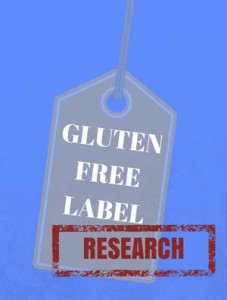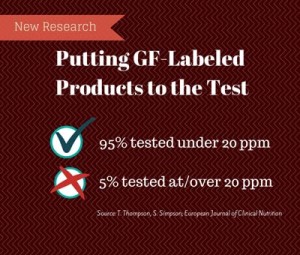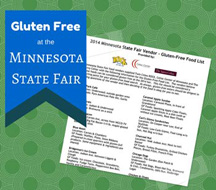Research: Some Gluten Free Labeled Products are not really Gluten Free
October 3, 2014 by Amy Leger | G+ Amy Leger As we all know, the boom of gluten free labeled products has been a blessing and a curse for gluten-free eaters. For years companies labeled products gluten free with more products coming on board every day. But at the time, there were no federal standards in place, so as you can imagine some of us from time to time might wonder if you could trust the label.
As we all know, the boom of gluten free labeled products has been a blessing and a curse for gluten-free eaters. For years companies labeled products gluten free with more products coming on board every day. But at the time, there were no federal standards in place, so as you can imagine some of us from time to time might wonder if you could trust the label.
The trust factor has improved since August of 2013. That is when the FDA finalized its Gluten-Free Labeling Rule*. Quickly explained, the rule states if a company wants to make the gluten-free claim on a product, it must contain less than 20 parts per million of gluten. Keep in mind, to label gluten free is voluntary…not mandatory.
Wednesday, the European Journal of Clinical Nutrition published research from Gluten-Free Dietitian and founder of Gluten Free Watchdog, Tricia Thompson and Suzanne Simpson, dietitian at the Celiac Disease Center at Columbia University looking into how companies are doing with manufacturing and labeling of gluten-free foods.
158 gluten free labeled products were tested over three years (from April 2011-April 2014). They were purchased at supermarkets or online and sent unopened to a testing facility in in Burlington, VT. “Each product was tested in duplicate using the Ridascreen Gliadin sandwich R5 enzyme-linked immunosorbent assay (ELISA) Mendez method…If it was suspected to contain gluten protein fragments owing to the use of certain fermented or hydrolyzed ingredients, it also was tested using the competitive R5 ELISA,” the report said.
What researchers found: 95% of the gluten free labeled products were under 20 ppm of gluten, and about 87% were actually less than 5 ppm. “Gluten-free shoppers can take comfort in the fact that the vast majority of labeled gluten-free foods tested by Gluten Free Watchdog had gluten levels below 20 parts per million, AND most of these products tested below 5 parts per million gluten. That said, ALL products labeled gluten-free should test below 20 ppm gluten and ALL products certified gluten-free should test below the standard set by the certifying organization,” Tricia Thompson told The Savvy Celiac in an email interview.
But that still leaves 5% that didn’t make the cut. These products came in a variety of forms: spices, tortillas, hot cereal, tea, and some bread products. Indeed, some of these were certified. Brand names are not specified in this report, click here to see the results. The supplementary table is best viewed in context with the full report and is not meant to be a stand-alone document.
Based on this information, can we conclude that a particular food product is more at risk of being over 20 ppm? Thompson said, no. “It is difficult to draw any conclusions that would be helpful to a gluten-free shopper regarding the type of labeled gluten-free foods that may be more likely to be contaminated. Gluten Free Watchdog notifies manufacturers when a food tests at or above 20 ppm gluten. Generally, this leads to a phone conversation or lengthy email exchange,” Thompson said.
“Products appear to have tested high for a variety of reasons, including manufacturers not realizing that inherently gluten-free grains can be contaminated with gluten, manufacturers not using specially produced gluten-free oats, and manufacturer testing protocols being less than ideal.” But she adds, since companies had to begin complying with the new labeling rule on August 5, 2014, her organization has not had to contact any manufacturers about problem results.
It can become easy to just let product marketers tell you an item is gluten free with bold labeling on the front and/or back of a package. But Thompson says even though compliance has been pretty good according to this report…we are not off the hook from reading those labels. “Unfortunately, there are manufacturers who continue to use barley malt ingredients in their labeled gluten-free foods. Hydrolyzed wheat is showing up in some labeled gluten-free Asian-style sauces,” Thompson said. “My advice to gluten-free consumers is to remain vigilant when reading labels even though this is time consuming.”
*There is much more detail about what is involved in labeling a product gluten free. If you want more information, please click here to see the FDA’s Q and A about the subject.
Tags: celiac, compliance, diet, free, gluten, gluten-free, gluten-free label, label, manufacturer, ppm, research, sensitivity, shopping, study, test




Leave a Reply